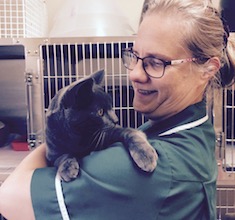Length 6 weeks
april
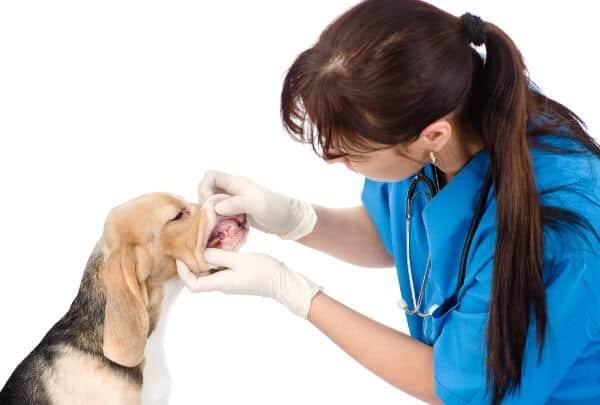
Course Details
Week 1 Aetiology and Pathogenesis Anatomy of the head Tooth and periodontal anatomy, and oral soft tissues Oral nomenclature Tooth types, nomenclature and formulae Eruption times Occlusion Learning objectives After completion of
Course Details
Week 1
Aetiology and Pathogenesis
Anatomy of the head
Tooth and periodontal anatomy, and oral soft tissues
Oral nomenclature
Tooth types, nomenclature and formulae
Eruption times
Occlusion
Learning objectives
After completion of this week, participants should be able to:
Identify tooth and periodontal structures
Explain the Modified Triadan System of numbering teeth in the dog and cat
Recognise normal occlusion
Week 2
Periodontology
Aetiology and pathogenesis of dental disease
Gingivitis
Periodontitis
Gingivostomatitis
Periodontal therapy
Scaling and polishing
Pocket control and therapy
Medications, homecare (brief), dental clinics (brief)
Learning objectives
After completion of this week, participants should be able to:
Describe how gingivitis develops and its progression to periodontal disease
Explain what gingivostomatitis is
Outline the process of safe ultrasonic tooth scaling and its purpose
Week 3
Oral Pathology and Treatment
Trauma and treatment options
Tooth fracture / discolouration / (sub) luxation
Dental diseases and treatment options
Tooth resorption / caries / periodontal disease
Malocclusion and treatment options
Traumatic / dental / skeletal malocclusions
Other conditions and treatment options
Enamel defects / dentigerous cysts / persistent deciduous / root dilacerations and abnormal morphology / tumours
Learning objectives
After completion of this week, participants should be able to:
Identify common pathologies associated with the teeth and oral cavity
Describe some potential treatment options for common pathologies
Week 4
Oral Examination and Charting
History taking and clinical examination – conscious oral examination
Pre-operative tests
Assessment under general anaesthesia – including anaesthesia induction, intubation, oral preparation, probing
Charting – what to fill in, disease scoring and making your chart work
Imaging and other investigations
Radiography – parallel and bisecting angle techniques
Biopsy
Learning objectives
After completion of this week, participants should be able to:
Confidently undertake a thorough conscious examination of a patient’s teeth
and oral cavity
Set up for and assist with assessment of the teeth and oral cavity in an anaesthetised patient
Accurately complete a dental chart which documents all pathology discovered upon examination
Week 5
Instrumentation and Dental Surgery
Instruments – use, care and maintenance
Dental machine and other powered equipment – use, care and maintenance
Ancillary equipment – use, care and maintenance
Preparation for and veterinary nursing assistance with surgery
Pre-, intra- and post-operatively, including analgesia
The role of intraoperative radiography
Learning objectives
After completion of this week, participants should be able to:
Differentiate between different instruments used for dental and oral procedures, and state what they are used for
Describe the proper use, care and maintenance of a range of dental instruments and equipment
Explain the benefits of oral radiography in veterinary patients and outline the basic, fundamental principles of the parallel and bisecting angle techniques
Week 6
Dental Clinics, Products and Homecare
What is an effective dental clinic
Types of patients attending dental clinics
Resources for dental clinic consultations
Products and interventions available to help with maintaining oral health
Oral homecare regimes
Effective dissemination of theoretical and practical oral hygiene advice
Client concordance and follow-up
Learning objectives
After completion of this week, participants should be able to:
Debate what makes a dental clinic effective
Explain the range of resources required to run an effective dental clinic, and the purpose of these resources
Describe how a range of products and interventions used to maintain optimal oral health work
Outline how to achieve and maintain client compliance with recommended oral homecare regimes
The course will be fully tutored by Claire Bloor and will consist of 15 hours of CPD given in various formats, including tutorials, tasks, case scenarios, forum discussions and quizzes. This course is tutored for 6 weeks, followed by a two week extension of untutored ‘catch up’ time, before the course officially ends.
All delegates will then have unlimited lifetime access to the learning material for future reference
Time
April 8 (Monday) - May 17 (Friday)
Location
Online
Speaker
Claire BloorClaire Bloor MA Ed, BSc (Hons) VN, RVN, PGCE, QTLS, Cert VN (Dent), IQA Veterinary Senior Lecturer – School of Veterinary Medicine, University of Central Lancashire
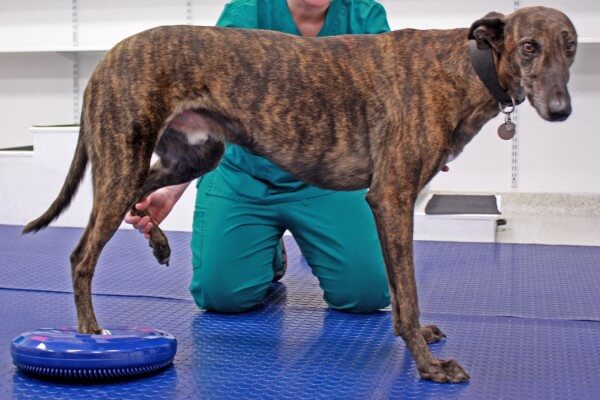
Course Details
Week 1 Physiotherapy Toolkit (Modalities) Electrotherapies Therapeutic hot/cold packs Manual therapies Applied exercise therapies Learning objectives After completion of this week, participants should be able to: Understand the principles and application
Course Details
Week 1
Physiotherapy Toolkit (Modalities)
Electrotherapies
Therapeutic hot/cold packs
Manual therapies
Applied exercise therapies
Learning objectives
After completion of this week, participants should be able to:
Understand the principles and application of electrotherapy including:
K-laser
Transcutaneous electrical nerve stimulation (TENS)
Neuromuscular electrical stimulation (NMES)
Pulsed magnetic therapy (Biomag)
Therapeutic ultrasound
Understand the use of therapeutic hot/ cold packs
Understand manual therapy and its application including:
Massage
Effleurage
Coupage
Joint mobilisations
Graded stretches
Understand applied exercise therapy including:
Strengthening and stabilising exercises
Balance and proprioceptive exercises
Functional exercises
Hydrotherapy
Week 2
Patient Assessment
Musculoskeletal patient assessment
Neurological patient assessment
Respiratory / critical care patient assessment
Learning objectives
After completion of this week, participants should be able to:
Carry out a basic musculoskeletal, neurological, and respiratory physiotherapy assessment
Understand valid outcome measures to guide patient treatment
How to write SOAP (subjective, objective, analysis, plan) notes to progress patient treatment
Week 3
Physiotherapy and Hydrotherapy Treatment Techniques
Early phase rehabilitation 0-2 weeks
Mid phase rehabilitation 2-6 weeks
Late phase rehabilitation 6-12 weeks
Patient discharge or maintenance physiotherapy programme
Learning objectives
After completion of this week, participants should be able to:
Carry out early physiotherapy treatment including:
Early manual therapy techniques
Early phase hot and cold pack treatment
Early electrotherapies to improve healing and for pain relief
Mid phase gentle exercise programmes including hydrotherapy
Late phase exercise therapy to include advanced strengthening, proprioceptive, balance and functional exercises
Late phase electrotherapies for pain relief, soft tissue injuries and muscle strengthening
Week 4
Physiotherapy Progression Plans and Home Exercise Programmes
Patient rehabilitation plans
Discharge and maintenance programmes
Home exercise plans
Learning objectives
After completion of this week, participants should be able to:
Learn how and when to progress patient plans from early to mid through to late stage rehabilitation to optimise patient outcomes
Understand when to discharge a patient, or to continue with a maintenance programme for chronic cases or surgical complications
Design home exercise programmes for owners to carry out
Week 5
Musculoskeletal Case Studies
CCL reconstruction – TPLO or lateral suture
Soft tissue injuries (tendinopathies, iliopsoas strains)
Fracture repair
Conservative management of chronic conditions, including hip dysplasia and elbow dysplasia
Learning objectives
After completion of this week, participants should be able to:
Consider appropriate assessment, treatment plan and progression of a musculoskeletal case study
Consider appropriate assessment, treatment plan and progression of a soft tissue case study
Consider appropriate assessment, treatment plan and progression of a fracture repair case study
Consider appropriate assessment, treatment plan and progression of a chronic condition case study
Week 6
Neurological and Respiratory (Intensive Care) Case Studies
Hemi- laminectomy (HLE)
Fibrocartilage embolism (FCE)
Pneumonia
Learning objectives
After completion of this week, participants should be able to:
Consider appropriate assessment, treatment plan and progression of a surgical neurological case study
Consider appropriate assessment, treatment plan and progression of a non-surgical case study
Consider appropriate assessment, treatment plan and progression of a respiratory (critical care) case study
This course will be fully tutored by Donna Carver, and will consist of 15 hours of CPD given in various formats, including tutorials, tasks, case studies, forum discussions and quizzes. This course is tutored for 6 weeks, followed by a two week extension of untutored ‘catch up’ time, before the course officially ends.
All delegates will then have unlimited lifetime access to the learning material for future reference
Time
April 29 (Monday) - June 7 (Friday)
Location
Online
Speaker
Donna CarverBSC(Hons) Physiotherapy, DipAVN (Surgical), RVN, MCSP Pain & Rehabilitation Service, Glasgow Veterinary School
may

Course Details
Week 1 Aetiology and Pathogenesis Anatomy of the head Tooth and periodontal anatomy, and oral soft tissues Oral nomenclature Tooth types, nomenclature and formulae Eruption times Occlusion Learning objectives After completion of
Course Details
Week 1
Aetiology and Pathogenesis
Anatomy of the head
Tooth and periodontal anatomy, and oral soft tissues
Oral nomenclature
Tooth types, nomenclature and formulae
Eruption times
Occlusion
Learning objectives
After completion of this week, participants should be able to:
Identify tooth and periodontal structures
Explain the Modified Triadan System of numbering teeth in the dog and cat
Recognise normal occlusion
Week 2
Periodontology
Aetiology and pathogenesis of dental disease
Gingivitis
Periodontitis
Gingivostomatitis
Periodontal therapy
Scaling and polishing
Pocket control and therapy
Medications, homecare (brief), dental clinics (brief)
Learning objectives
After completion of this week, participants should be able to:
Describe how gingivitis develops and its progression to periodontal disease
Explain what gingivostomatitis is
Outline the process of safe ultrasonic tooth scaling and its purpose
Week 3
Oral Pathology and Treatment
Trauma and treatment options
Tooth fracture / discolouration / (sub) luxation
Dental diseases and treatment options
Tooth resorption / caries / periodontal disease
Malocclusion and treatment options
Traumatic / dental / skeletal malocclusions
Other conditions and treatment options
Enamel defects / dentigerous cysts / persistent deciduous / root dilacerations and abnormal morphology / tumours
Learning objectives
After completion of this week, participants should be able to:
Identify common pathologies associated with the teeth and oral cavity
Describe some potential treatment options for common pathologies
Week 4
Oral Examination and Charting
History taking and clinical examination – conscious oral examination
Pre-operative tests
Assessment under general anaesthesia – including anaesthesia induction, intubation, oral preparation, probing
Charting – what to fill in, disease scoring and making your chart work
Imaging and other investigations
Radiography – parallel and bisecting angle techniques
Biopsy
Learning objectives
After completion of this week, participants should be able to:
Confidently undertake a thorough conscious examination of a patient’s teeth
and oral cavity
Set up for and assist with assessment of the teeth and oral cavity in an anaesthetised patient
Accurately complete a dental chart which documents all pathology discovered upon examination
Week 5
Instrumentation and Dental Surgery
Instruments – use, care and maintenance
Dental machine and other powered equipment – use, care and maintenance
Ancillary equipment – use, care and maintenance
Preparation for and veterinary nursing assistance with surgery
Pre-, intra- and post-operatively, including analgesia
The role of intraoperative radiography
Learning objectives
After completion of this week, participants should be able to:
Differentiate between different instruments used for dental and oral procedures, and state what they are used for
Describe the proper use, care and maintenance of a range of dental instruments and equipment
Explain the benefits of oral radiography in veterinary patients and outline the basic, fundamental principles of the parallel and bisecting angle techniques
Week 6
Dental Clinics, Products and Homecare
What is an effective dental clinic
Types of patients attending dental clinics
Resources for dental clinic consultations
Products and interventions available to help with maintaining oral health
Oral homecare regimes
Effective dissemination of theoretical and practical oral hygiene advice
Client concordance and follow-up
Learning objectives
After completion of this week, participants should be able to:
Debate what makes a dental clinic effective
Explain the range of resources required to run an effective dental clinic, and the purpose of these resources
Describe how a range of products and interventions used to maintain optimal oral health work
Outline how to achieve and maintain client compliance with recommended oral homecare regimes
The course will be fully tutored by Claire Bloor and will consist of 15 hours of CPD given in various formats, including tutorials, tasks, case scenarios, forum discussions and quizzes. This course is tutored for 6 weeks, followed by a two week extension of untutored ‘catch up’ time, before the course officially ends.
All delegates will then have unlimited lifetime access to the learning material for future reference
Time
April 8 (Monday) - May 17 (Friday)
Location
Online
Speaker
Claire BloorClaire Bloor MA Ed, BSc (Hons) VN, RVN, PGCE, QTLS, Cert VN (Dent), IQA Veterinary Senior Lecturer – School of Veterinary Medicine, University of Central Lancashire

Course Details
Week 1 Physiotherapy Toolkit (Modalities) Electrotherapies Therapeutic hot/cold packs Manual therapies Applied exercise therapies Learning objectives After completion of this week, participants should be able to: Understand the principles and application
Course Details
Week 1
Physiotherapy Toolkit (Modalities)
Electrotherapies
Therapeutic hot/cold packs
Manual therapies
Applied exercise therapies
Learning objectives
After completion of this week, participants should be able to:
Understand the principles and application of electrotherapy including:
K-laser
Transcutaneous electrical nerve stimulation (TENS)
Neuromuscular electrical stimulation (NMES)
Pulsed magnetic therapy (Biomag)
Therapeutic ultrasound
Understand the use of therapeutic hot/ cold packs
Understand manual therapy and its application including:
Massage
Effleurage
Coupage
Joint mobilisations
Graded stretches
Understand applied exercise therapy including:
Strengthening and stabilising exercises
Balance and proprioceptive exercises
Functional exercises
Hydrotherapy
Week 2
Patient Assessment
Musculoskeletal patient assessment
Neurological patient assessment
Respiratory / critical care patient assessment
Learning objectives
After completion of this week, participants should be able to:
Carry out a basic musculoskeletal, neurological, and respiratory physiotherapy assessment
Understand valid outcome measures to guide patient treatment
How to write SOAP (subjective, objective, analysis, plan) notes to progress patient treatment
Week 3
Physiotherapy and Hydrotherapy Treatment Techniques
Early phase rehabilitation 0-2 weeks
Mid phase rehabilitation 2-6 weeks
Late phase rehabilitation 6-12 weeks
Patient discharge or maintenance physiotherapy programme
Learning objectives
After completion of this week, participants should be able to:
Carry out early physiotherapy treatment including:
Early manual therapy techniques
Early phase hot and cold pack treatment
Early electrotherapies to improve healing and for pain relief
Mid phase gentle exercise programmes including hydrotherapy
Late phase exercise therapy to include advanced strengthening, proprioceptive, balance and functional exercises
Late phase electrotherapies for pain relief, soft tissue injuries and muscle strengthening
Week 4
Physiotherapy Progression Plans and Home Exercise Programmes
Patient rehabilitation plans
Discharge and maintenance programmes
Home exercise plans
Learning objectives
After completion of this week, participants should be able to:
Learn how and when to progress patient plans from early to mid through to late stage rehabilitation to optimise patient outcomes
Understand when to discharge a patient, or to continue with a maintenance programme for chronic cases or surgical complications
Design home exercise programmes for owners to carry out
Week 5
Musculoskeletal Case Studies
CCL reconstruction – TPLO or lateral suture
Soft tissue injuries (tendinopathies, iliopsoas strains)
Fracture repair
Conservative management of chronic conditions, including hip dysplasia and elbow dysplasia
Learning objectives
After completion of this week, participants should be able to:
Consider appropriate assessment, treatment plan and progression of a musculoskeletal case study
Consider appropriate assessment, treatment plan and progression of a soft tissue case study
Consider appropriate assessment, treatment plan and progression of a fracture repair case study
Consider appropriate assessment, treatment plan and progression of a chronic condition case study
Week 6
Neurological and Respiratory (Intensive Care) Case Studies
Hemi- laminectomy (HLE)
Fibrocartilage embolism (FCE)
Pneumonia
Learning objectives
After completion of this week, participants should be able to:
Consider appropriate assessment, treatment plan and progression of a surgical neurological case study
Consider appropriate assessment, treatment plan and progression of a non-surgical case study
Consider appropriate assessment, treatment plan and progression of a respiratory (critical care) case study
This course will be fully tutored by Donna Carver, and will consist of 15 hours of CPD given in various formats, including tutorials, tasks, case studies, forum discussions and quizzes. This course is tutored for 6 weeks, followed by a two week extension of untutored ‘catch up’ time, before the course officially ends.
All delegates will then have unlimited lifetime access to the learning material for future reference
Time
April 29 (Monday) - June 7 (Friday)
Location
Online
Speaker
Donna CarverBSC(Hons) Physiotherapy, DipAVN (Surgical), RVN, MCSP Pain & Rehabilitation Service, Glasgow Veterinary School
june

Course Details
Week 1 Physiotherapy Toolkit (Modalities) Electrotherapies Therapeutic hot/cold packs Manual therapies Applied exercise therapies Learning objectives After completion of this week, participants should be able to: Understand the principles and application
Course Details
Week 1
Physiotherapy Toolkit (Modalities)
Electrotherapies
Therapeutic hot/cold packs
Manual therapies
Applied exercise therapies
Learning objectives
After completion of this week, participants should be able to:
Understand the principles and application of electrotherapy including:
K-laser
Transcutaneous electrical nerve stimulation (TENS)
Neuromuscular electrical stimulation (NMES)
Pulsed magnetic therapy (Biomag)
Therapeutic ultrasound
Understand the use of therapeutic hot/ cold packs
Understand manual therapy and its application including:
Massage
Effleurage
Coupage
Joint mobilisations
Graded stretches
Understand applied exercise therapy including:
Strengthening and stabilising exercises
Balance and proprioceptive exercises
Functional exercises
Hydrotherapy
Week 2
Patient Assessment
Musculoskeletal patient assessment
Neurological patient assessment
Respiratory / critical care patient assessment
Learning objectives
After completion of this week, participants should be able to:
Carry out a basic musculoskeletal, neurological, and respiratory physiotherapy assessment
Understand valid outcome measures to guide patient treatment
How to write SOAP (subjective, objective, analysis, plan) notes to progress patient treatment
Week 3
Physiotherapy and Hydrotherapy Treatment Techniques
Early phase rehabilitation 0-2 weeks
Mid phase rehabilitation 2-6 weeks
Late phase rehabilitation 6-12 weeks
Patient discharge or maintenance physiotherapy programme
Learning objectives
After completion of this week, participants should be able to:
Carry out early physiotherapy treatment including:
Early manual therapy techniques
Early phase hot and cold pack treatment
Early electrotherapies to improve healing and for pain relief
Mid phase gentle exercise programmes including hydrotherapy
Late phase exercise therapy to include advanced strengthening, proprioceptive, balance and functional exercises
Late phase electrotherapies for pain relief, soft tissue injuries and muscle strengthening
Week 4
Physiotherapy Progression Plans and Home Exercise Programmes
Patient rehabilitation plans
Discharge and maintenance programmes
Home exercise plans
Learning objectives
After completion of this week, participants should be able to:
Learn how and when to progress patient plans from early to mid through to late stage rehabilitation to optimise patient outcomes
Understand when to discharge a patient, or to continue with a maintenance programme for chronic cases or surgical complications
Design home exercise programmes for owners to carry out
Week 5
Musculoskeletal Case Studies
CCL reconstruction – TPLO or lateral suture
Soft tissue injuries (tendinopathies, iliopsoas strains)
Fracture repair
Conservative management of chronic conditions, including hip dysplasia and elbow dysplasia
Learning objectives
After completion of this week, participants should be able to:
Consider appropriate assessment, treatment plan and progression of a musculoskeletal case study
Consider appropriate assessment, treatment plan and progression of a soft tissue case study
Consider appropriate assessment, treatment plan and progression of a fracture repair case study
Consider appropriate assessment, treatment plan and progression of a chronic condition case study
Week 6
Neurological and Respiratory (Intensive Care) Case Studies
Hemi- laminectomy (HLE)
Fibrocartilage embolism (FCE)
Pneumonia
Learning objectives
After completion of this week, participants should be able to:
Consider appropriate assessment, treatment plan and progression of a surgical neurological case study
Consider appropriate assessment, treatment plan and progression of a non-surgical case study
Consider appropriate assessment, treatment plan and progression of a respiratory (critical care) case study
This course will be fully tutored by Donna Carver, and will consist of 15 hours of CPD given in various formats, including tutorials, tasks, case studies, forum discussions and quizzes. This course is tutored for 6 weeks, followed by a two week extension of untutored ‘catch up’ time, before the course officially ends.
All delegates will then have unlimited lifetime access to the learning material for future reference
Time
April 29 (Monday) - June 7 (Friday)
Location
Online
Speaker
Donna CarverBSC(Hons) Physiotherapy, DipAVN (Surgical), RVN, MCSP Pain & Rehabilitation Service, Glasgow Veterinary School
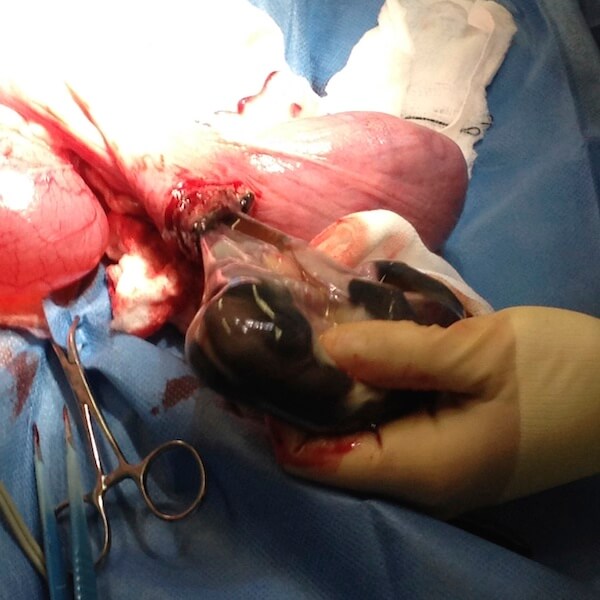
Course Details
Week 1 Preparation and Monitoring of Critical Cases Preparedness Considerations Invasive blood pressure monitoring Blood gas analysis Spirometry Learning objectives After completion of this week, participants should be able to: List generalised
Course Details
Week 1
Preparation and Monitoring of Critical Cases
Preparedness
Considerations
Invasive blood pressure monitoring
Blood gas analysis
Spirometry
Learning objectives
After completion of this week, participants should be able to:
List generalised considerations for preparing to anaesthetise emergency cases
Setup and use invasive blood pressure monitoring and how this relates to oscillometric and doppler techniques
Interpret a basic blood gas analysis and outline how this abnormality may have occurred
Explain what spirometry is and how it differs from capnography
Week 2
Abdominal Surgical Emergencies
Gastric dilatation and volvulus
Haemoabdomen
The acute abdomen
Epidural anaesthesia
Learning objectives
After completion of this week, participants should be able to:
Understand the physiological disturbances caused by gastric dilatation and volvulus
Understand the physiological disturbances caused by haemoabdomen
Understand the physiological disturbances caused by the acute abdomen
Suggest considerations for these surgeries and list possible complications that may arise during anaesthesia
List the total and relative contraindications for epidural anaesthesia
Week 3
Thoracic Surgical Emergencies
Pyothorax
Penetrating injuries
Diaphragmatic rupture
Mechanical ventilation
Learning objectives
After completion of this week, participants should be able to:
Understand the physiological disturbances caused by pyothorax
Understand the physiological disturbances caused by a penetrating injury
Understand the physiological disturbances caused by diaphragmatic rupture
Suggest considerations for these surgeries and list possible complications that may arise during anaesthesia
Feel confident to safely choose ventilator settings for use during non-emergency surgery
Week 4
Caesareans
Physiology
ASA categorisation
Anaesthesia protocols
Anaesthesia infusions (TIVA)
Learning objectives
After completion of this week, participants should be able to:
Understand the physiological considerations for caesarean section
Assign and justify the choice of an ASA category to the caesarean section patient
Suggest a safe protocol for caesarean section, with variation based on differing drug availability depending on clinical setting
Understand the basis of total intravenous anaesthesia infusions
Week 5
What’s Happening? What Should I do?
Hypoxia
Hypocapnia
Hypotension
ECG Abnormalities
Learning objectives
After completion of this week, participants should be able to:
List possible causes of, and suggest treatments for hypoxia and hypocapnia
List possible causes of hypotension and discuss the physiology of both pharmacological and non-pharmacological treatment options
Interpret the most common ECG abnormalities seen and understand how these rhythms will affect the patient, and have an understanding of possible treatment options
Week 6
CRASH!
Recover CPR guidelines
Crash box
Basic life support
Advanced life support
Learning objectives
After completion of this week, participants should be able to:
List the vital components of a crash box
Perform safe and effective chest compressions in a variety of patient sizes and conformations
Understand how to monitor the effectiveness of CPR in the clinical setting
Interpret the most common ECG rhythms seen during CPR
Understand what drug treatment options are available during CPR
The course will be fully tutored by William McFadzean and will consist of 15 hours of CPD given in various formats, including tutorials, tasks, case scenarios, forum discussions and quizzes. This course is tutored for 6 weeks, followed by a two week extension of untutored ‘catch up’ time, before the course officially ends.
All delegates will then have unlimited lifetime access to the learning material for future reference
Time
June 3 (Monday) - July 12 (Friday)
Location
Online
Speaker
William McFadzeanBVetMed, CertAVP (VA), DipECVAA, MRCVS Cave Veterinary Specialists
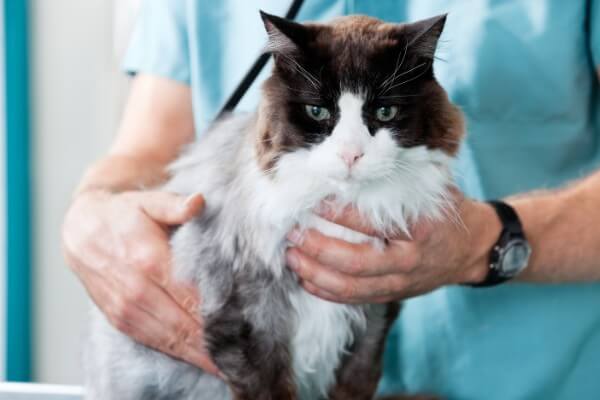
Course Details
Week 1 Feline Heart Disease Prevalence, aetiology and pathophysiology of feline heart disease Classification systems used to diagnose and treat feline cardiomyopathies Nursing care and treatment aims Learning objectives
Course Details
Week 1
Feline Heart Disease
Prevalence, aetiology and pathophysiology of feline heart disease
Classification systems used to diagnose and treat feline cardiomyopathies
Nursing care and treatment aims
Learning objectives
After completion of this week, participants should be able to:
Explain the pathophysiology of feline heart disease
Understand the American College of Veterinary Internal Medicine (ACVIM) classification system as it applies to feline cardiomyopathies
Be familiar with the best approach to a nurse a cat with heart disease and heart failure
Week 2
Canine Heart Disease
Prevalence, aetiology and pathophysiology of myxomatous mitral valve disease (MMVD) and dilated cardiomyopathy (DCM)
Classification systems used to diagnose and treat MMVD
Staging systems used to diagnose and treat DCM in dogs
Nursing care of dogs with heart disease and heart failure
Learning objectives
After completion of this week, participants should be able to:
Explain the pathophysiology of MMVD and DCM
Understand the ACVIM classification system as it applies to MMVD and the staging system as it applies to canine DCM
Be familiar with the best approach to nurse a dog with either MMVD or DCM
Week 3
Electrocardiography (ECG) – Theory
The ECG machine and settings
Achieving a good quality ECG trace
How to interpret an ECG
Learning objectives
After completion of this week, participants should be able to:
Set up an ECG and understand the settings
Apply theory to achieve a good quality ECG trace
Understand how to interpret an ECG, using an algorithmic system
Week 4
Electrocardiography (ECG) – Application
Application of theory from week 1 to cases
Anaesthesia and ECGs
Life threatening arrhythmias
Learning objectives
After completion of this week, participants should be able to:
Apply theoretical learning to practical cases
Understand the role of anaesthesia and surgery upon ECGs
Identify life threatening arrhythmias
Week 5
Heart Failure
Pathophysiology of heart failure
Acute life threatening and chronic management
Management of patients with heart failure
Learning objectives
After completion of this week, participants should be able to:
Understand how heart failure can occur
Identify patients with heart failure and nurse them appropriately
Recognise drugs used in the treatment of heart failure
Week 6
Diagnostic Tests and the Cardiac Patient
Diagnostic tests used in cardiac patients
How to approach the test and the patient
Evaluation of diagnostic tests in cardiac patients
Learning objectives
After completion of this week, participants should be able to:
Perform or assist with diagnostic tests with confidence
Apply best practice methods to achieve reliable and repeatable results
Understand the purpose of diagnostic tests used in cardiac medicine
The course will be fully tutored by Charlotte Pace and will consist of 15 hours of CPD given in various formats, including tutorials, tasks, case scenarios, forum discussions and quizzes. This course is tutored for 6 weeks, followed by a two week extension of untutored ‘catch up’ time, before the course officially ends.
All delegates will then have unlimited lifetime access to the learning material for future reference
Time
June 10 (Monday) - July 19 (Friday)
Location
Online
Speaker
Charlotte PaceBA (Hons), RVN, VTS (Cardiology), PGCert (VetEd), FHEA
july

Course Details
Week 1 Preparation and Monitoring of Critical Cases Preparedness Considerations Invasive blood pressure monitoring Blood gas analysis Spirometry Learning objectives After completion of this week, participants should be able to: List generalised
Course Details
Week 1
Preparation and Monitoring of Critical Cases
Preparedness
Considerations
Invasive blood pressure monitoring
Blood gas analysis
Spirometry
Learning objectives
After completion of this week, participants should be able to:
List generalised considerations for preparing to anaesthetise emergency cases
Setup and use invasive blood pressure monitoring and how this relates to oscillometric and doppler techniques
Interpret a basic blood gas analysis and outline how this abnormality may have occurred
Explain what spirometry is and how it differs from capnography
Week 2
Abdominal Surgical Emergencies
Gastric dilatation and volvulus
Haemoabdomen
The acute abdomen
Epidural anaesthesia
Learning objectives
After completion of this week, participants should be able to:
Understand the physiological disturbances caused by gastric dilatation and volvulus
Understand the physiological disturbances caused by haemoabdomen
Understand the physiological disturbances caused by the acute abdomen
Suggest considerations for these surgeries and list possible complications that may arise during anaesthesia
List the total and relative contraindications for epidural anaesthesia
Week 3
Thoracic Surgical Emergencies
Pyothorax
Penetrating injuries
Diaphragmatic rupture
Mechanical ventilation
Learning objectives
After completion of this week, participants should be able to:
Understand the physiological disturbances caused by pyothorax
Understand the physiological disturbances caused by a penetrating injury
Understand the physiological disturbances caused by diaphragmatic rupture
Suggest considerations for these surgeries and list possible complications that may arise during anaesthesia
Feel confident to safely choose ventilator settings for use during non-emergency surgery
Week 4
Caesareans
Physiology
ASA categorisation
Anaesthesia protocols
Anaesthesia infusions (TIVA)
Learning objectives
After completion of this week, participants should be able to:
Understand the physiological considerations for caesarean section
Assign and justify the choice of an ASA category to the caesarean section patient
Suggest a safe protocol for caesarean section, with variation based on differing drug availability depending on clinical setting
Understand the basis of total intravenous anaesthesia infusions
Week 5
What’s Happening? What Should I do?
Hypoxia
Hypocapnia
Hypotension
ECG Abnormalities
Learning objectives
After completion of this week, participants should be able to:
List possible causes of, and suggest treatments for hypoxia and hypocapnia
List possible causes of hypotension and discuss the physiology of both pharmacological and non-pharmacological treatment options
Interpret the most common ECG abnormalities seen and understand how these rhythms will affect the patient, and have an understanding of possible treatment options
Week 6
CRASH!
Recover CPR guidelines
Crash box
Basic life support
Advanced life support
Learning objectives
After completion of this week, participants should be able to:
List the vital components of a crash box
Perform safe and effective chest compressions in a variety of patient sizes and conformations
Understand how to monitor the effectiveness of CPR in the clinical setting
Interpret the most common ECG rhythms seen during CPR
Understand what drug treatment options are available during CPR
The course will be fully tutored by William McFadzean and will consist of 15 hours of CPD given in various formats, including tutorials, tasks, case scenarios, forum discussions and quizzes. This course is tutored for 6 weeks, followed by a two week extension of untutored ‘catch up’ time, before the course officially ends.
All delegates will then have unlimited lifetime access to the learning material for future reference
Time
June 3 (Monday) - July 12 (Friday)
Location
Online
Speaker
William McFadzeanBVetMed, CertAVP (VA), DipECVAA, MRCVS Cave Veterinary Specialists

Course Details
Week 1 Feline Heart Disease Prevalence, aetiology and pathophysiology of feline heart disease Classification systems used to diagnose and treat feline cardiomyopathies Nursing care and treatment aims Learning objectives
Course Details
Week 1
Feline Heart Disease
Prevalence, aetiology and pathophysiology of feline heart disease
Classification systems used to diagnose and treat feline cardiomyopathies
Nursing care and treatment aims
Learning objectives
After completion of this week, participants should be able to:
Explain the pathophysiology of feline heart disease
Understand the American College of Veterinary Internal Medicine (ACVIM) classification system as it applies to feline cardiomyopathies
Be familiar with the best approach to a nurse a cat with heart disease and heart failure
Week 2
Canine Heart Disease
Prevalence, aetiology and pathophysiology of myxomatous mitral valve disease (MMVD) and dilated cardiomyopathy (DCM)
Classification systems used to diagnose and treat MMVD
Staging systems used to diagnose and treat DCM in dogs
Nursing care of dogs with heart disease and heart failure
Learning objectives
After completion of this week, participants should be able to:
Explain the pathophysiology of MMVD and DCM
Understand the ACVIM classification system as it applies to MMVD and the staging system as it applies to canine DCM
Be familiar with the best approach to nurse a dog with either MMVD or DCM
Week 3
Electrocardiography (ECG) – Theory
The ECG machine and settings
Achieving a good quality ECG trace
How to interpret an ECG
Learning objectives
After completion of this week, participants should be able to:
Set up an ECG and understand the settings
Apply theory to achieve a good quality ECG trace
Understand how to interpret an ECG, using an algorithmic system
Week 4
Electrocardiography (ECG) – Application
Application of theory from week 1 to cases
Anaesthesia and ECGs
Life threatening arrhythmias
Learning objectives
After completion of this week, participants should be able to:
Apply theoretical learning to practical cases
Understand the role of anaesthesia and surgery upon ECGs
Identify life threatening arrhythmias
Week 5
Heart Failure
Pathophysiology of heart failure
Acute life threatening and chronic management
Management of patients with heart failure
Learning objectives
After completion of this week, participants should be able to:
Understand how heart failure can occur
Identify patients with heart failure and nurse them appropriately
Recognise drugs used in the treatment of heart failure
Week 6
Diagnostic Tests and the Cardiac Patient
Diagnostic tests used in cardiac patients
How to approach the test and the patient
Evaluation of diagnostic tests in cardiac patients
Learning objectives
After completion of this week, participants should be able to:
Perform or assist with diagnostic tests with confidence
Apply best practice methods to achieve reliable and repeatable results
Understand the purpose of diagnostic tests used in cardiac medicine
The course will be fully tutored by Charlotte Pace and will consist of 15 hours of CPD given in various formats, including tutorials, tasks, case scenarios, forum discussions and quizzes. This course is tutored for 6 weeks, followed by a two week extension of untutored ‘catch up’ time, before the course officially ends.
All delegates will then have unlimited lifetime access to the learning material for future reference
Time
June 10 (Monday) - July 19 (Friday)
Location
Online
Speaker
Charlotte PaceBA (Hons), RVN, VTS (Cardiology), PGCert (VetEd), FHEA
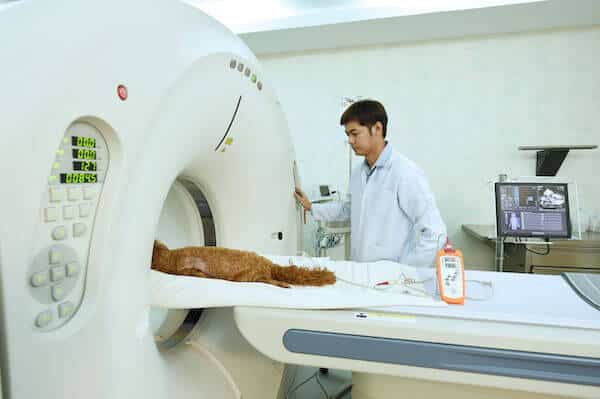
Course Details
Week 1 Radiation Physics and Safety Learning objectives After completion of this week, participants should be able to: Understand the properties of x-rays Explain how an x-ray tube
Course Details
Week 1
Radiation Physics and Safety
Learning objectives
After completion of this week, participants should be able to:
Understand the properties of x-rays
Explain how an x-ray tube works
Explain how digital x-ray systems work
Explain the risks of working with radiation
Explain the principles of radiation protection and how this is implemented in veterinary practice
Week 2
Radiographic Anatomy and Physiology in Small Animal Patients
Learning objectives
After completion of this week, participants should be able to:
Understand the normal radiographic anatomy of the thorax
Understand the normal radiographic anatomy of the abdomen
Understand the normal radiographic anatomy of the spine
Understand the normal radiographic anatomy of the thoracic limb
Understand the normal radiographic anatomy of the pelvis and pelvic limbs
Week 3
Radiographic Techniques (Positioning and Contrast Studies)
Learning objectives
After completion of this week, participants should be able to:
Understand and implement the optimum positioning for thoracic radiographs
Understand and implement the optimum positioning for abdominal radiographs
Understand and implement the optimum positioning for spinal radiographs
Understand and implement the optimum positioning for pelvic
Understand and implement the optimum positioning for thoracic limb radiographs
Understand and implement the optimum positioning for pelvic limb radiographs
Explain specialised orthopaedic views (TTA / TPLO / stressed / flexed / extended)
Understand contrast media and its usage
Describe contrast and dynamic studies (IVU / retrograde urethrocystogram/angiography)
Week 4
MRI and CT – Physics and Safety
Learning objectives
After completion of this week, participants should be able to:
Describe the basic principles of how CT works
Describe the basic principles of how MRI works
Explain safety concerns when working with CT
Explain safety concerns when working with MRI
Compare differences between CT and MRI
Week 5
MRI Techniques and Acquisition
Learning objectives
After completion of this week, participants should be able to:
Understand how to position small animal patients for spinal imaging
Understand how to position small animal patients for brain imaging
Explain which sequences are commonly utilised in small animal imaging
Understand commonly seen MRI artefacts
Week 6
CT Techniques and Acquisition
Learning objectives
After completion of this week, participants should be able to:
Understand how to position small animal patients for commonly performed CT studies (Spine / Thorax / Abdomen / Elbow)
Explain which reconstruction algorithms can be utilised and when
Understand commonly seen CT artefacts
This course will be fully tutored by Ash Moors and will consist of 15 hours of CPD given in various formats, including tutorials, tasks, case studies, forum discussions and quizzes. This course is tutored for 6 weeks, followed by a two week extension of untutored ‘catch up’ time, before the course officially ends.
All delegates will then have unlimited lifetime access to the learning material for future reference
Time
July 15 (Monday) - August 23 (Friday)
Location
Online
Speaker
Ash MoorsFdSc, GradDipVN, PGCertVedEd, FHEA, RVN VETERINARY RADIOGRAPHER ROYAL VETERINARY COLLEGE
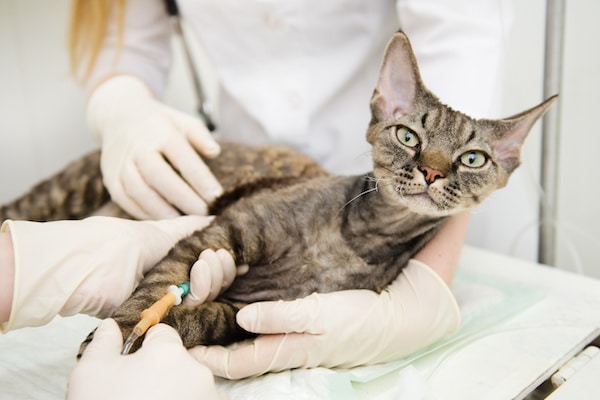
Course Details
Week 1 Transfusion Medicine This week we will look at indications for packed red cell and whole blood transfusions, in both cats and dogs, in the acute
Course Details
Week 1
Transfusion Medicine
This week we will look at indications for packed red cell and whole blood transfusions, in both cats and dogs, in the acute emergency setting. The nurse’s role is vital in this field, including preparing the recipient, blood typing, cross matching and monitoring the recipient. We will cover common reasons for transfusion and patient specific nursing concerns, as well as indications for auto transfusion and xenotransfusion. Common coagulopathies will also be discussed, along with indications for the use of plasma products in small animal patients.
Learning objectives
After completion of this week, participants should be able to:
Select the correct blood product for the individual patient
Understand the monitoring these patients require and patient specific concerns
Explain the different transfusion reactions that can occur and how they are avoided and treated
List the indications for auto transfusion and xenotransfusion
Describe the main coagulopathies we encounter and the treatment options available
Week 2
Acute Kidney Injury
Acute kidney injury is a relatively common presentation in emergency and critical care, however, it can occur for a variety of reasons. This week will look at the conditions that lead to acute kidney injury and how we reach that diagnosis. We will look at treatment options including reviews of the evidence bases in terms of patients that are anuric. The nursing role in these patients is multi- faceted and it is vital we can monitor and nurse these patients effectively.
Learning objectives
After completion of this week, participants should be able to:
Understand the different reasons that AKI develops, including post-surgery, toxin related and obstruction of the urinary tract
Understand the monitoring and nursing requirements of these patients including fluid therapy, acid-base status and how we recognize when they are deteriorating
Explain how we manage anuric patients including evidence reviews of methods to force diuresis
Understand the basics of peritoneal and haemodialysis for these patients and the indications
Week 3
Diabetic Ketoacidosis
DKA is a complex disorder that can be life threatening for our patients, and the nursing team play a large role in the management and recovery of these patients. There are multiple considerations in nursing a patient with DKA that go well beyond administering insulin. We will review common reasons for a patient to develop this endocrine disorder as well as acid- base and electrolyte abnormalities we may see.
These patients need intensive monitoring including repeated blood work so we will discuss how to minimize the impact of this on their welfare. There will also be discussion on the different approaches to administration of insulin and ongoing management of these cases when they are discharged home.
Learning objectives
After completion of this week, participants should be able to:
Recognise the concurrent conditions that may lead to difficulty stabilizing the DKA patient
Understand how we reach the diagnosis and the treatment priorities for these patients
Understand the different approaches to insulin administration as well as the pros and cons of each method
Explain how to prioritise appropriate monitoring for these patients
Week 4
Acute Pancreatitis
The pancreatitis patient is a common presentation to any practice. It is an inflammatory condition that can be classed from mild to severe. We will focus on the nursing care and assessment of the patients requiring hospitalisation for management. Whilst we often consider these patients as just needing a couple of days of supportive care, there are some serious complications that can occur and contribute to mortality.
Learning objectives
After completion of this week, participants should be able to:
Understand common aetiologies in dogs and cats
Review pain management options including drug types and routes of administration
Discuss nutritional support options
Identify complications including development of SIRS
Week 5
Acute Respiratory Distress
These patients present many challenges to us in practice and need some special consideration in terms of monitoring and nursing care. We will look at recognition of the patient in respiratory distress, the potential causes, and our priorities for treatment. We will review the monitoring tools that may be beneficial and our approach to stabilising these patients.
Learning objectives
After completion of this week, participants should be able to:
Prioritise stabilisation techniques based on patient presentation
Determine which method of oxygen supplementation is most appropriate for specific patients
Appreciate the management of patients in brachycephalic crisis
Understand the different approaches to diagnostics and monitoring for these very fragile patients
Week 6
Addisonian Crisis
Known as the “great pretender”, Addison’s disease leads to a potentially life-threatening situation when the patient goes into crisis. Whilst electrolyte abnormalities are present in a typical Addisonian we can see no electrolyte changes in atypical cases. The patient with an Addison’s crisis has multiple abnormalities which we need to monitor and correct. Consideration of management options for these patients as well as resolving the crisis will all be discussed.
Learning objectives
After completion of this week, participants should be able to:
Understand the aetiology, common clinical signs, and effects of this complex disorder
Identify and differentiate a patient that has Addison’s disease, with a patient in an Addisonian crisis
Understand the nursing considerations for these patients in the hospital environment, and appreciate the impact stress hormones have
Identify priorities for treatment and ongoing management
This course will be fully tutored by Kath Howie and will consist of 15 hours of CPD given in various formats, including tutorials, tasks, case studies, forum discussions and quizzes. This course is tutored for 6 weeks, followed by a two week extension of untutored ‘catch up’ time, before the course officially ends.
All delegates will then have unlimited lifetime access to the learning material for future reference
Time
July 29 (Monday) - September 6 (Friday)
Location
Online
Speaker
Kath HowieVTS (ECC), RVN Principal Nurse Manager, Vets Now
august

Course Details
Week 1 Radiation Physics and Safety Learning objectives After completion of this week, participants should be able to: Understand the properties of x-rays Explain how an x-ray tube
Course Details
Week 1
Radiation Physics and Safety
Learning objectives
After completion of this week, participants should be able to:
Understand the properties of x-rays
Explain how an x-ray tube works
Explain how digital x-ray systems work
Explain the risks of working with radiation
Explain the principles of radiation protection and how this is implemented in veterinary practice
Week 2
Radiographic Anatomy and Physiology in Small Animal Patients
Learning objectives
After completion of this week, participants should be able to:
Understand the normal radiographic anatomy of the thorax
Understand the normal radiographic anatomy of the abdomen
Understand the normal radiographic anatomy of the spine
Understand the normal radiographic anatomy of the thoracic limb
Understand the normal radiographic anatomy of the pelvis and pelvic limbs
Week 3
Radiographic Techniques (Positioning and Contrast Studies)
Learning objectives
After completion of this week, participants should be able to:
Understand and implement the optimum positioning for thoracic radiographs
Understand and implement the optimum positioning for abdominal radiographs
Understand and implement the optimum positioning for spinal radiographs
Understand and implement the optimum positioning for pelvic
Understand and implement the optimum positioning for thoracic limb radiographs
Understand and implement the optimum positioning for pelvic limb radiographs
Explain specialised orthopaedic views (TTA / TPLO / stressed / flexed / extended)
Understand contrast media and its usage
Describe contrast and dynamic studies (IVU / retrograde urethrocystogram/angiography)
Week 4
MRI and CT – Physics and Safety
Learning objectives
After completion of this week, participants should be able to:
Describe the basic principles of how CT works
Describe the basic principles of how MRI works
Explain safety concerns when working with CT
Explain safety concerns when working with MRI
Compare differences between CT and MRI
Week 5
MRI Techniques and Acquisition
Learning objectives
After completion of this week, participants should be able to:
Understand how to position small animal patients for spinal imaging
Understand how to position small animal patients for brain imaging
Explain which sequences are commonly utilised in small animal imaging
Understand commonly seen MRI artefacts
Week 6
CT Techniques and Acquisition
Learning objectives
After completion of this week, participants should be able to:
Understand how to position small animal patients for commonly performed CT studies (Spine / Thorax / Abdomen / Elbow)
Explain which reconstruction algorithms can be utilised and when
Understand commonly seen CT artefacts
This course will be fully tutored by Ash Moors and will consist of 15 hours of CPD given in various formats, including tutorials, tasks, case studies, forum discussions and quizzes. This course is tutored for 6 weeks, followed by a two week extension of untutored ‘catch up’ time, before the course officially ends.
All delegates will then have unlimited lifetime access to the learning material for future reference
Time
July 15 (Monday) - August 23 (Friday)
Location
Online
Speaker
Ash MoorsFdSc, GradDipVN, PGCertVedEd, FHEA, RVN VETERINARY RADIOGRAPHER ROYAL VETERINARY COLLEGE

Course Details
Week 1 Transfusion Medicine This week we will look at indications for packed red cell and whole blood transfusions, in both cats and dogs, in the acute
Course Details
Week 1
Transfusion Medicine
This week we will look at indications for packed red cell and whole blood transfusions, in both cats and dogs, in the acute emergency setting. The nurse’s role is vital in this field, including preparing the recipient, blood typing, cross matching and monitoring the recipient. We will cover common reasons for transfusion and patient specific nursing concerns, as well as indications for auto transfusion and xenotransfusion. Common coagulopathies will also be discussed, along with indications for the use of plasma products in small animal patients.
Learning objectives
After completion of this week, participants should be able to:
Select the correct blood product for the individual patient
Understand the monitoring these patients require and patient specific concerns
Explain the different transfusion reactions that can occur and how they are avoided and treated
List the indications for auto transfusion and xenotransfusion
Describe the main coagulopathies we encounter and the treatment options available
Week 2
Acute Kidney Injury
Acute kidney injury is a relatively common presentation in emergency and critical care, however, it can occur for a variety of reasons. This week will look at the conditions that lead to acute kidney injury and how we reach that diagnosis. We will look at treatment options including reviews of the evidence bases in terms of patients that are anuric. The nursing role in these patients is multi- faceted and it is vital we can monitor and nurse these patients effectively.
Learning objectives
After completion of this week, participants should be able to:
Understand the different reasons that AKI develops, including post-surgery, toxin related and obstruction of the urinary tract
Understand the monitoring and nursing requirements of these patients including fluid therapy, acid-base status and how we recognize when they are deteriorating
Explain how we manage anuric patients including evidence reviews of methods to force diuresis
Understand the basics of peritoneal and haemodialysis for these patients and the indications
Week 3
Diabetic Ketoacidosis
DKA is a complex disorder that can be life threatening for our patients, and the nursing team play a large role in the management and recovery of these patients. There are multiple considerations in nursing a patient with DKA that go well beyond administering insulin. We will review common reasons for a patient to develop this endocrine disorder as well as acid- base and electrolyte abnormalities we may see.
These patients need intensive monitoring including repeated blood work so we will discuss how to minimize the impact of this on their welfare. There will also be discussion on the different approaches to administration of insulin and ongoing management of these cases when they are discharged home.
Learning objectives
After completion of this week, participants should be able to:
Recognise the concurrent conditions that may lead to difficulty stabilizing the DKA patient
Understand how we reach the diagnosis and the treatment priorities for these patients
Understand the different approaches to insulin administration as well as the pros and cons of each method
Explain how to prioritise appropriate monitoring for these patients
Week 4
Acute Pancreatitis
The pancreatitis patient is a common presentation to any practice. It is an inflammatory condition that can be classed from mild to severe. We will focus on the nursing care and assessment of the patients requiring hospitalisation for management. Whilst we often consider these patients as just needing a couple of days of supportive care, there are some serious complications that can occur and contribute to mortality.
Learning objectives
After completion of this week, participants should be able to:
Understand common aetiologies in dogs and cats
Review pain management options including drug types and routes of administration
Discuss nutritional support options
Identify complications including development of SIRS
Week 5
Acute Respiratory Distress
These patients present many challenges to us in practice and need some special consideration in terms of monitoring and nursing care. We will look at recognition of the patient in respiratory distress, the potential causes, and our priorities for treatment. We will review the monitoring tools that may be beneficial and our approach to stabilising these patients.
Learning objectives
After completion of this week, participants should be able to:
Prioritise stabilisation techniques based on patient presentation
Determine which method of oxygen supplementation is most appropriate for specific patients
Appreciate the management of patients in brachycephalic crisis
Understand the different approaches to diagnostics and monitoring for these very fragile patients
Week 6
Addisonian Crisis
Known as the “great pretender”, Addison’s disease leads to a potentially life-threatening situation when the patient goes into crisis. Whilst electrolyte abnormalities are present in a typical Addisonian we can see no electrolyte changes in atypical cases. The patient with an Addison’s crisis has multiple abnormalities which we need to monitor and correct. Consideration of management options for these patients as well as resolving the crisis will all be discussed.
Learning objectives
After completion of this week, participants should be able to:
Understand the aetiology, common clinical signs, and effects of this complex disorder
Identify and differentiate a patient that has Addison’s disease, with a patient in an Addisonian crisis
Understand the nursing considerations for these patients in the hospital environment, and appreciate the impact stress hormones have
Identify priorities for treatment and ongoing management
This course will be fully tutored by Kath Howie and will consist of 15 hours of CPD given in various formats, including tutorials, tasks, case studies, forum discussions and quizzes. This course is tutored for 6 weeks, followed by a two week extension of untutored ‘catch up’ time, before the course officially ends.
All delegates will then have unlimited lifetime access to the learning material for future reference
Time
July 29 (Monday) - September 6 (Friday)
Location
Online
Speaker
Kath HowieVTS (ECC), RVN Principal Nurse Manager, Vets Now
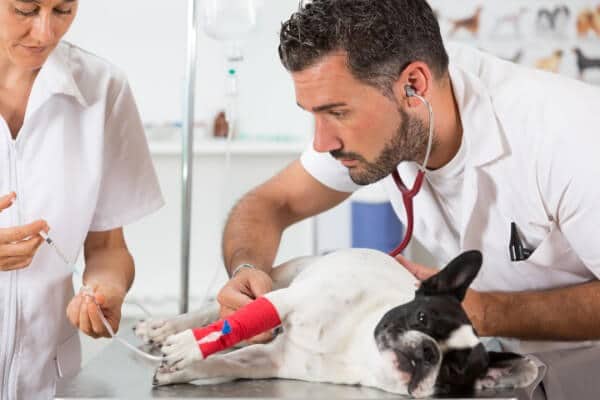
Course Details
Week 1 Patient Assessment and Triage The concept of triage Preparedness Primary survey Secondary Survey Emergency history Learning objectives After completion of this week, participants should be able to: Understand the triage
Course Details
Week 1
Patient Assessment and Triage
The concept of triage
Preparedness
Primary survey
Secondary Survey
Emergency history
Learning objectives
After completion of this week, participants should be able to:
Understand the triage process and how it can be utilised to prioritise emergency care
Describe how to make their team and environment prepared for when the emergency patient arrives
List how to carry out a primary survey during the initial assessment of the patient
Explain how to carry out a secondary survey assessment in order to list their concerns with the patient
Discuss how to communicate with the client including telephone advice, informed consent and emergency history
Week 2
Shock
Classify shock
Emergency database
Blood pressure
Oxygen therapy
The use of multiparameter monitors
Learning objectives
After completion of this week, participants should be able to:
Identify a patient with shock and classify which type of shock they have
Explain which parameters may be tested during an emergency database and how these can help to identify shock in the emergency room
Understand the physiology of perfusion and ways in which blood pressure can be monitored in the emergency patient
List the different ways that oxygen therapy can be delivered to the emergency patient
Understand the uses and limitations of multiparameter monitors and their role in monitoring perfusion trends
Week 3
Fluid Therapy
Patient assessment
Identifying a fluid deficit or change in volume
What fluids are available
Managing a change in content
Identifying a change in fluid distribution
Learning objectives
After completion of this week, participants should be able to:
Explain how to assess the patient’s fluid status using clinical exam and blood work
Discuss how to create a fluid plan to treat a fluid deficit such as hypovolaemia or dehydration
List what fluid options are available and which fluid might be preferred in which situation
Understand how fluid selection or the fluid plan can be altered to account for an electrolyte abnormality
Describe how to manage the patient with fluid overload or peripheral oedema
Week 4
Neurological Emergencies
Neurological assessment
Coma scoring
Raised intracranial pressure
Seizures
Learning objectives
After completion of this week, participants should be able to:
Describe how to perform a neurological assessment of an emergency patient
Describe how to perform a coma score and understand how these may be used in neurological patients
Understand methods of identifying raised intracranial pressure and the physiology behind this
Recognise a seizuring patient and understand their management, from initial presentation and stabilisation of mild seizures through to the management of a patient in status epilepticus
Week 5
Approach to the Trauma Patient
Assessment of wounds
Wound management
Management of fractures
Other injuries associated with trauma
Analgesia
Learning objectives
After completion of this week, participants should be able to:
Identify different wounds based on the patient history and appearance of the wound
Understand the principles of wound management and common techniques used to flush and debride wounds
Describe how to identify and manage fractures in the trauma patient
List other common injuries associated with trauma and how these should be managed
Implement an analgesia plan for the trauma patient based on pain assessment
Week 6
Common Toxicities
Common toxins seen in emergency practice
Renal toxins
Hepatotoxins
Anticoagulants
Neurotoxins
Learning objectives
After completion of this week, participants should be able to:
Describe the different ways toxins can enter the body
List the most common renal toxins and understand the treatment of these patients
List the most common hepatotoxins and understand the different treatments for each of these
Understand the physiological effects of anticoagulant ingestion and the treatment of these patients
Identify the most common neurotoxins seen in practice and understand the treatment of these patients
The course will be fully tutored by Elle Haskey and Katie Gray and will consist of 15 hours of CPD given in various formats, including tutorials, tasks, case studies, forum discussions and quizzes. This course is tutored for 6 weeks, followed by a two week extension of untutored ‘catch up’ time, before the course officially ends.
All delegates will then have unlimited lifetime access to the learning material for future reference
Time
August 12 (Monday) - September 20 (Friday)
Location
Online
Speakers for this event
-
Elle Haskey
Elle Haskey
BSc(hons), VTS(ECC) VPAC A1, RVN
HEAD EMERGENCY AND CRITICAL CARE NURSE, ROYAL VETERINARY COLLEGE
BSc(hons), VTS(ECC) VPAC A1, RVN
-
Katie Gray
Katie Gray
Dip AVN, RVN
SENIOR EMERGENCY AND CRITICAL CARE NURSE, ROYAL VETERINARY COLLEGE
Dip AVN, RVN




